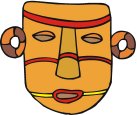
MIXED EXERCISES

QUIZZES: EXPRESSIONS

QUIZNET -BBC - MULTIPLE CHOICE


| 9 de Julio Avenue & the Obelisk. Buenos Aires, Argentina. |
| Avenida 9 de Julio is an avenue in Buenos Aires, Argentina. At 140 meters, it is the world's widest avenue. Its name honors Argentina's birthdate. (July 9, 1816). | |
The avenue's unusual width is due to the fact that it spans en entire cuadra, the distance between two streets in the checkerboard pattern used in Buenos Aires.
The distance between adjacent streets is roughly 110 meters, greater than the equivalent Manhattan distance. The street flanking 9 de Julio to the east is called Carlos Pellegrini (north of Rivadavia) and Bernardo de Irigoyen (south of Rivadavia). The street flanking 9 de Julio to the west is called Cerrito (north of Rivadavia) and Lima (south of Rivadavia). Those lateral streets (which actually just add lanes to the avenue) are included in the 140 meter calculation.

The mate is a drink that tastes like "Tea" and it is usually and traditionally a social drink. Groups of friends and/or family have "mate" anytime during the day, alone or with somebody else, and the particularity of this drink is everyone drinks from the same mate, using the same "bombilla".
The mate is a container that holds an infusion that Argentines call a mate. Both the container and the drink are called the same name, so whenever you ask for a mate, you will can either receive the mate recipient or the recipient with the drink.
Description
The word "mate" comes from the Quechuan word "mati", which means "gourd" and is traditionally drank in Argentina, Uruguay, Paraguay and in the sout h of Brazil.
h of Brazil.
There are different types of mates; the traditional one is made from the "calabaza" (gourd) but there are also made with other materials like wood with a smooth exterior; some with engravings or carved with drawings and landscapes and others made of silver.
The "yerba mate" (South America plant), is a dry leaf and and constitutes the main ingredient for the preparation of the "mate". There are different types of "yerba" like the one with or without sticks and it is available at any supermarkets or grocery stores in packages of 1/2 and 1 kilo. 
To drink the "mate" we need a "bombilla", which is a small metal straw with a grid rounded at the end, that it used as a filter. The "bombillas" also come in different sizes, materials and designs, being the most common of metal one and the most exclusive is the one made of silver.
The last component is the water; hot water that is considered to "ideal" at a few degrees before boiling. If the water boils, the "mate" it not good, because the "yerba" gets inconsistent.
Cleaning of the Mate
A very important detail is that gourd "mates" must be cleaned or cured used for the first time. The cleaning or curing eliminates the pigments of the wood that produce bad odor, and to eliminate the soft fabrics of the internal walls of the "mate". The cleaning process is simple and you can get instructions when you get a gourd mate.
Preparation and Serving of the Mate
Warm up the water and take away from the heat a few minutes before it starts boiling.
Fill 3/4 of the mate with "yerba".
Cover the top with your hand, turn it upside down and tap the base softly - so that the dust of the yerba (herb) stays in the surface.
Hold the mate in 45 degree angle and introduce the bombilla (metal straw) all the  way down.
way down.
If you want to have a sweet mat, pour some sugar in, if not proceed to step 6.
Pour the hot water softly until it reaches the edge of the mate. After a few seconds, the water will be absorbed by the herb and will go down.
Wait a few seconds and pour some more water until the top of the mate.
After these simple steps, the mate is ready. Once the water is drank, serve it again, and so on. The mate is deemed "washed" when it starts losing its taste, so just throw away the yerba and put some more in.
NOTE: The mate is a home loving tradition, it is not served or sold as a drink in public places. It is not very common to be served in restaurants or bars. If you have the opportunity to go to a family house and they offer you a mate, do not say no, at least try one as a courtesy.
| Argentina - History By Ekaterina Zhdanova-Redman |  |
 1 Before the arrival of European settlers to Argentina in the 16th century, many different native people already lived there. Many belonged to small, nomadic tribes. Among these native people were two large groups--the Diaguita, who lived in the north, near the Andes Mountains, and the Guarani, who lived in the south. Both groups of native Argentines were primarily farmers.
1 Before the arrival of European settlers to Argentina in the 16th century, many different native people already lived there. Many belonged to small, nomadic tribes. Among these native people were two large groups--the Diaguita, who lived in the north, near the Andes Mountains, and the Guarani, who lived in the south. Both groups of native Argentines were primarily farmers.| Argentina - Culture By Ekaterina Zhdanova-Redman |  |
 1 Modern Argentina is a nation of immigrants. During its history, people from all over the world came to live in Argentina. People from Europe, Africa, and elsewhere have immigrated to Argentina. Because of this, much of Argentina's culture is a reflection of European and African culture. A lot of what you can see and hear in modern Argentina has its roots in Europe and Africa.
1 Modern Argentina is a nation of immigrants. During its history, people from all over the world came to live in Argentina. People from Europe, Africa, and elsewhere have immigrated to Argentina. Because of this, much of Argentina's culture is a reflection of European and African culture. A lot of what you can see and hear in modern Argentina has its roots in Europe and Africa.| Argentina - Geography By Ekaterina Zhdanova-Redman |  |
 1 Argentina is a big country. It has lots of interesting and exciting places. Argentina is located in South America. It is the sixth largest country in the world! Argentina has many different kinds of land. In the north, there are rainforests. In the west are the Andes Mountains. Along Argentina's east side is the Atlantic Ocean.
1 Argentina is a big country. It has lots of interesting and exciting places. Argentina is located in South America. It is the sixth largest country in the world! Argentina has many different kinds of land. In the north, there are rainforests. In the west are the Andes Mountains. Along Argentina's east side is the Atlantic Ocean.
| can | could |
| may | might |
| shall | should |
| will | would |
| must |


